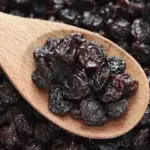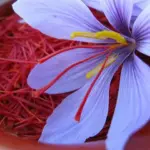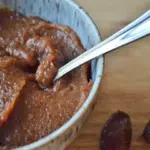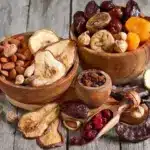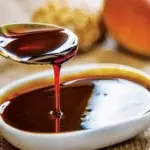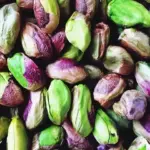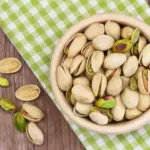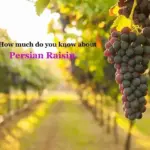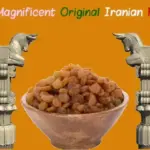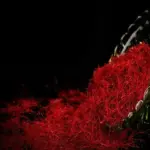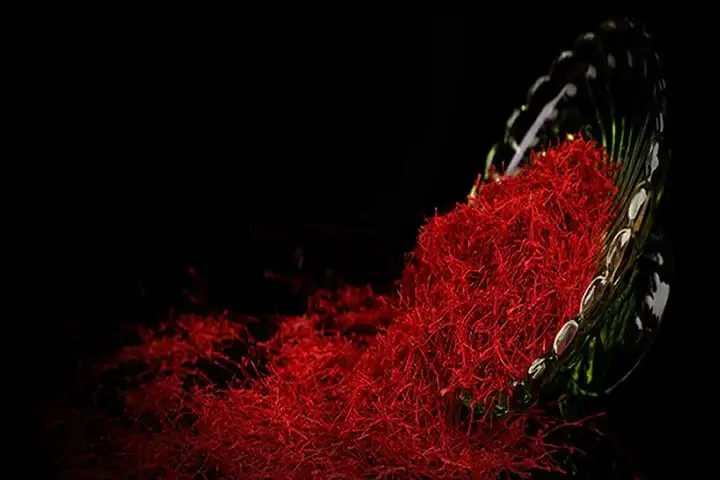In this article from the RST FOOD website, we intend to comprehensively introduce you to Iranian red gold, stay with us.
The red gold of Persia is the name of a legendary plant whose scientific name is Crocus Sativus and has many properties.
This Red gold of Persia has other names in other languages, including:
French names:
1. S. cultive
2. S. d’automne
3. S. officinal, Safran
English name:
1. Crocus
2. Dye – Saffron
3. True – Saffron
4. Saffron
German name:
1. Safran Echter safran
Italian name:
1. Zafferano
2. domestico
Arabic name:
1. saffron
2. Kruku
History of production of Red gold of Persia in the world
Based on the evidence, it seems that the Red gold of Persia was first discovered in the Bronze Age in Greece (4th millennium BC). The history of the production of saffron can be considered as ancient as “time”. It is said that Cleopatra, the last pharaoh of ancient Egypt and one of the most powerful and greatest female kings in the history of the world, went to the lion bath and Red gold of Persia before meeting her suitors. John O’Connell wrote in the book “Spices” that the women of the Minoan civilization (2000 BC) dyed their clothes with saffron and used saffron and beeswax to prepare lipstick and cosmetics.
Throughout history, Red gold of Persia has been used for everything from dyeing clothing, cooking, makeup, and treating ailments. The ancient Romans also used saffron perfume to make the public space fragrant. this product has been used as an antidote even during the outbreak of the Black Plague. The popularity of red gold of Persia as a medicine reached its peak in the Middle Ages. In a cookbook written by Le Viandier de Taillevent, which was published in 1300 AD, Red gold of Persia was used in the preparation of food.
History of production of Red gold of Persia in the Iran
The history of Iranian red gold in Iran can be traced back to the Achaemenid period. The first cultivation of this product was popularized in the Achaemenid period (550 BC).
Ancient Iranians at that time used saffron – Red gold of Persia – to flavor their food. Even in the description of the biography of “Darius Achaemenashi “, saffron is mentioned, that this Iranian king used saffron along with milk to perfume his body, it is written about saffron flower in the botanical book belonging to the Assyrian era. Also, in one of the ancient paintings of northwestern Iran, it is clear that Iranian red gold was used for coloring. It is even said that the Sumerians used Iranian red gold to prepare medicine and treatment. It may not be possible to give an exact date for the age of Red gold of Persia in Iran. But Iran is certainly one of the first origins of saffron in the world, and for this reason, this legendary plant is called the red gold of Iran.
For the first time, Red gold of Persia was taken to China, Greece and Rome among the Iranian Parthian tribes. In the past, doctors used the properties of saffron for treatment. this product is also used as ink to write orders and dye fabrics.
Red gold of Persia global import status
The top importers of saffron are countries including: Spain ($54.7 million), Hong Kong ($20.8 million), the United States ($18 million), Italy ($16.7 million) and India ($16.6 million) are.
Red gold of Persia is a plant that has onions and saffron onions are brown in color. The reproduction of saffron is formed only by the underground corm. This plant has a stem and 6 purple petals and usually has 3 strands of red stigma. (Of course, sometimes it has more than 3 fields.)
saffron consists of three main ingredients

1. Crocin (color agent)
2. Pyroxin (flavor agent)
3. Safranal (fragrance factor)
Iranian red gold flowers are purple, regular and contain a long tube. There are 3 flags inside the flower. The part that is used in saffron is its orange stigma, and it should be known that Red gold of Persia stigma has mineral salts, fat and mucilage.
The color of the stigma of Red gold of Persia, which depends on the amount of carotenoid and lycopene in it, is different and it is from deep red to pale orange and has a pleasant aroma and taste.
Types of red gold of Persia
Super Negin

Super Negin saffron is one of the best and highest quality saffron available in the market and it is a kind of birth certificate of Red gold of Persia in the world. This type of saffron has a higher quality and price than other types of saffron. This type of saffron has a good color quality and also has a beautiful appearance, so countries like China, India, Japan and Asian countries in general want this type of Red Gold of Persia.
Sargol

This type of saffron is prepared from the beginning of the stigma or the red gold of Persia. Sargol saffron has high coloring power and pure aroma and taste. In Sargol saffron, there is no mention of the yellow part that Red Gold of Persia has, or the saffron root, and only the stigma part, or the cut thread, is available in a completely separate and clean form. This type of red gold of Persia is known as ALL RED.
Pushal
It is a saffron that has red stigmas, along with some cream (between 3 and 5 mm). The production of this type of Red Gold of Persia is at the beginning of the harvest season. Also, this type has more survival than other types of saffron because it has some cream along with its stigmas. In a natural state, from every 100 kilos of saffron flowers, approximately one kilo of Pushal saffron is taken. This type of Red Gold of Persia has a higher coloring power compared to saffron because it has more color than saffron. Some people respect this type of saffron and use it due to the fact that in Pushal saffron, the stigma is attached to the cream and the possibility of fraud in saffron is reduced and it is easier to distinguish whether it is original or not fake. Do
Bunch or screw girl
Iranian red gold is considered to be the most original and basic type of saffron, and it is prepared in such a way that it is put together and after drying, it is prepared from all the strands of saffron (combination of saffron and cream). Generally, the cream part is between 3 and 5 mm, and according to the quality of Red Gold of Persia, the stigma part may be longer or shorter than that. It turns out that they are usually women.
Saffron type
The nature of saffron is hot and dry, which is very suitable for cold-tempered people, and warm-tempered people can also benefit from the properties of this unique plant by observing the amount of consumption and using the saffron extract along with Red Gold of Persia.
Export feature of Red Gold of Iranian saffron
• It does not have roots and the yellow part of saffron (of course, in the food industry)
• The stigmas are healthy, large, without breaks and wrinkles
• Have the highest coloring power, which is about 250 crocin and above
• The pieces and tridents of the Red Gold of Persia stigma are not attached at all
The effects of saffron elements on the human body
The effect of Red Gold of Persia elements on the central nervous system
- Safranal, aqueous/ethanol extracts of saffron: anticoagulant.
- Safranal: effective in improving nervous system disorders.
- Saffron extract, crocin, safranal, ethanol extract of saffron stigma: antidepressant.
- Crocin: protection of the nervous system.
- Crocin and crostin: anti-Parkinson, anti-Alzheimer, improving and strengthening memory and learning skills.
- Crocin and saffron extract: dealing with the lack of blood supply to the tissue of brain cells, brain damage and memory loss.
- Crocin and safranal: reduction of morphine addiction.
The effect of Red Gold of Persia elements on the cardiovascular system and blood cells
- Saffron extract, safranal: protective effect against heart attack.
- Crocin: protective effect against irregular heart muscle function in pumping and blood circulation.
- Crocin: positive effect on arterial stabilization.
- Crocin: positive effect on blood pressure.
- Crocin: reduction of cholesterol, triglycerides and low concentration of lipoprotein cholesterol.
- Safranal and crocin: reduction of blood toxins.
The effect of saffron on the immune system
- Saffron compounds: anti-infectious diseases (measles, smallpox, yellow fever) and have antibacterial, anti-infective and anti-fungal effects.
- Safranal: anti-damage effects on nerve cells.
- Different elements of saffron: pain reliever, anti-inflammatory (ear damage, toothache, swelling, earache, anal pain, gout, earache and gum inflammation).
The effect of saffron on the reproductive and urinary system
- Crocin, saffron extract, saffron: Ejaculation delay and impotence disorders.
- Saffron: effect on men’s sexual behavior and women’s premenstrual syndrome (PMS).
- Saffron: Improve kidney function.
The effect of saffron elements on the eyes
Elements of Red Gold of Persia and saffron compounds: poor vision, lack of daytime vision, impaired tear production, diseases related to the retina and cornea of the eye, and cataracts.
The effect of Iranian red gold elements on the skin
Liposome containing safranal and lotions containing saffron in Red Gold of Persia: sunscreen, moisturizing, softening and anti-itching properties; skin shine and clarity; Reducing dark pigments, darkness and bruises under the eyes and pimples and treating other skin problems and disorders widely.
You can see many other description of Red Gold of Persia of this amazing and legendary plant at the following address: ( https://rstfood.co/product/what-is-saffron/ )
Thank you for your consideration. please leave your comments below and let us know what you think!
Related products:
Read more:



